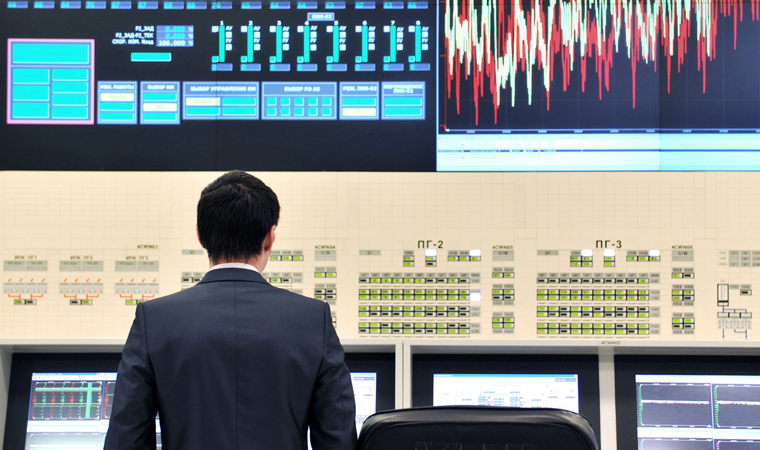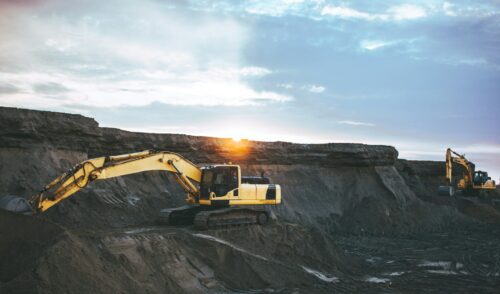
The reactor comes to life
back to contentsLate June, an important milestone was reached at the fourth reactor of Beloyarsk NPP: the fuel loading was completed to start the self-sustained chain fission reaction. Nuclear professionals call this “the gain of minimum critical mass,” the one that starts criticality in the nuclear reactor. So BN-800 became critical at 20.00 on June 27. “This is the point of time when the reactor starts out,” ROSATOM’s deputy CEO Alexander Lokshin explained.
Pulsus stabulo
The nuclear experts traced the process in the main control room. Valery Shamansky, Deputy Chief Engineer for Safety and Reliability of the plant, joyfully commented on the complex operation result: “Pulsus stabulo, heartbeats even. The approach to the minimum controlled power confirms that all calculations are correct as well as engineering solutions of BN-800 design.”
“The Beloyarsk nuclear workers have been waiting for start-up of BN-800 for nearly 30 years. This is a grand occasion for all of us. One can build whatever possible, but if there is a mistake in calculations, all is down the plughole,” Beloyarsk Plant Manager Mikhail Bakanov said. “The first criticality has confirmed the new reactor’s heart can beat. It’s already clear that everything is as per the calculated data; therefore, we are certain that BN-800 will operate as reliably as BN-600,” he said.
The first power is queuing
Now, Beloyarsk-4 has the right to be called a nuclear reactor. But its nuclear power reactor status is to come later. To gain this status, the reactor has to be fully loaded with fuel and tested to obtain its neutronics showing how it performs. “This will confirm that its control and protection systems function properly,” Shamansky explains. The next steps are the connection to the grid, power build-up and further rise to the rated value, and then commissioning to the pilot commercial and full-scale commercial operation. So a new nuclear power reactor will be available in 2105.
The global-scale start-up
The importance of BN-800 start-up for the world nuclear community is difficult to underestimate, Valery Shamansky says. “Everybody understands that without fast neutron reactors the nuclear power comes to the dead-end. It can develop only basing on breeders,” he believes. BN-800 should be involved in implementation of the intergovernmental agreement concerning the disposition of surplus weapons-grade plutonium signed with the USA. It will use the uranium-plutonium mixed oxide fuel, i.e. burn accumulated nuclear material. “But the key objective is to demonstrate reliable and safe operation of fast neutron reactors,” Valery Shamansky emphasizes.
With BN-800 the nuclear specialists will get additional confidence in the commercial success of the sodium-cooled fast neutron reactor BN-1200. “The Russian energy sector development plan envisages one BN-1200 reactor at Beloyarsk NPP and two more such reactors at South Urals plant in 2030,” Shamansky reveals.
If everything goes as planned, these reactors would reprocess nuclear waste. “The closed nuclear fuel cycle will require a fleet of plants consisting 30-40% of fast neutron reactors,” he believes. They have a great advantage: the fuel to feed them will last for thousand, tens of thousands years. There is no need to mine anything: everything is ready and waits in the wings. After irradiation in a fast neutron reactor and chemical treatment, uranium-238 and thorium yield plutonium-239 and uranium-233. As compared to thermal neutron systems, fast neutron reactors produce 1.5 times more of neutrons per fission. They are sufficient to initiate the chain reaction and to produce new fuel. This is the path to eternal power generation.




